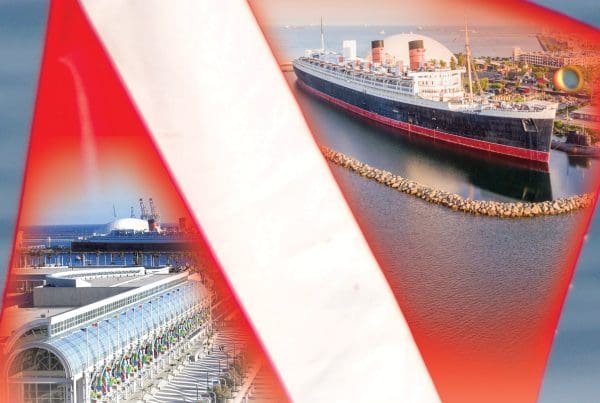James Stewart, chief diving officer emeritus at Scripps Institution of Oceanography at UC San Diego, has been awarded the 2008 American Academy of Underwater Sciences (AAUS) Scientific Diving Lifetime Achievement Award.
From 1960 until his retirement in 1991, Stewart managed Scripps’ diving operations, the oldest and largest nongovernmental research diving program in the United States. Under his guidance, the program became a model for safety and effectiveness for international research diving. Today he continues to be involved with the Scripps scientific diving program as an advisor to the Scripps Diving Control Board and lecturer for Scripps scientific diving courses.
The AAUS Scientific Diving Lifetime Achievement Award is bestowed annually to a member of the scientific diving community who has made significant contributions in advancing underwater science and technology.
“Jim’s legacy is apparent in all aspects of what we do,” said Christian McDonald, current Scripps Diving Safety Officer. “The rational approach to scientific diver training and diving safety developed and promoted by Jim and his colleagues in the early years remain the cornerstone for AAUS standards for diving safety.”
A native of San Diego, Stewart first put on a diving mask in 1941, paving the way to an invitation to the San Diego Bottom Scratchers, the nation’s oldest and most exclusive skin diving club. Joining Scripps as a volunteer in 1952, Stewart, with Conrad Limbaugh and Andy Rechnitzer (both previous recipients of the AAUS Scientific Diving Lifetime Achievement Award), worked to innovate scuba training procedures and underwater data collecting techniques, allowing scientists to safely and efficiently use scuba as a means of conducting underwater research.
As diving safety officer in the 1960s, Stewart developed the original “University Guide for Diving Safety,” a diving safety manual promulgating the framework for the conduct and management of scientific diving programs, initially within the University of California system and later for the national scientific community and various state and federal agencies.
While conducting research diving off Wake Island (North Pacific Ocean) in 1961, Stewart was attacked by a gray reef shark. Hit twice on the right elbow, the bites cut the joint capsule and two arteries. With his diving experience and the aid of friend Ron Church, he was able to escape and avoid further injuries. He was flown to a Hawaiian hospital and eventually recovered fully.
Stewart adds the AAUS Scientific Diving Lifetime Achievement Award to a long list of honors that includes the inaugural Conrad Limbaugh Memorial Award for Scientific Diving Leadership from the AAUS (2001); the Roger Revelle Trophy from the San Diego Oceans Foundation (2001); induction as one of the first members of the National Association of Underwater Instructors Hall of Honor (2000); the National Conservation Award from the secretary of the U.S. Department of the Interior (1992); and election to the Diving Hall of Fame, concurrent with being honored with the first Pioneer Award, from the Diving Equipment Manufacturers Association (1991).
In 2003, in honor of his years as diving officer for the National Science Foundation’s Office of Polar Programs, in which he oversaw science diving activities in the U.S. Antarctic Program, the U.S. Board of Geographic Names conferred the name “Stewart Peak” on a 1,097-meter mountain in Antarctica in his honor.










